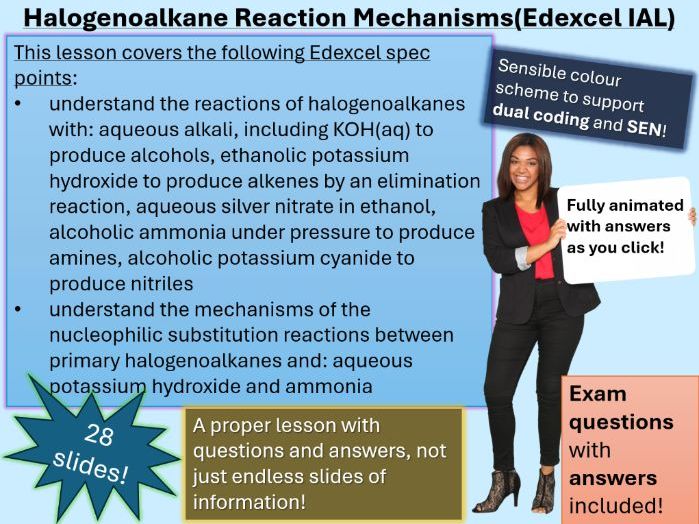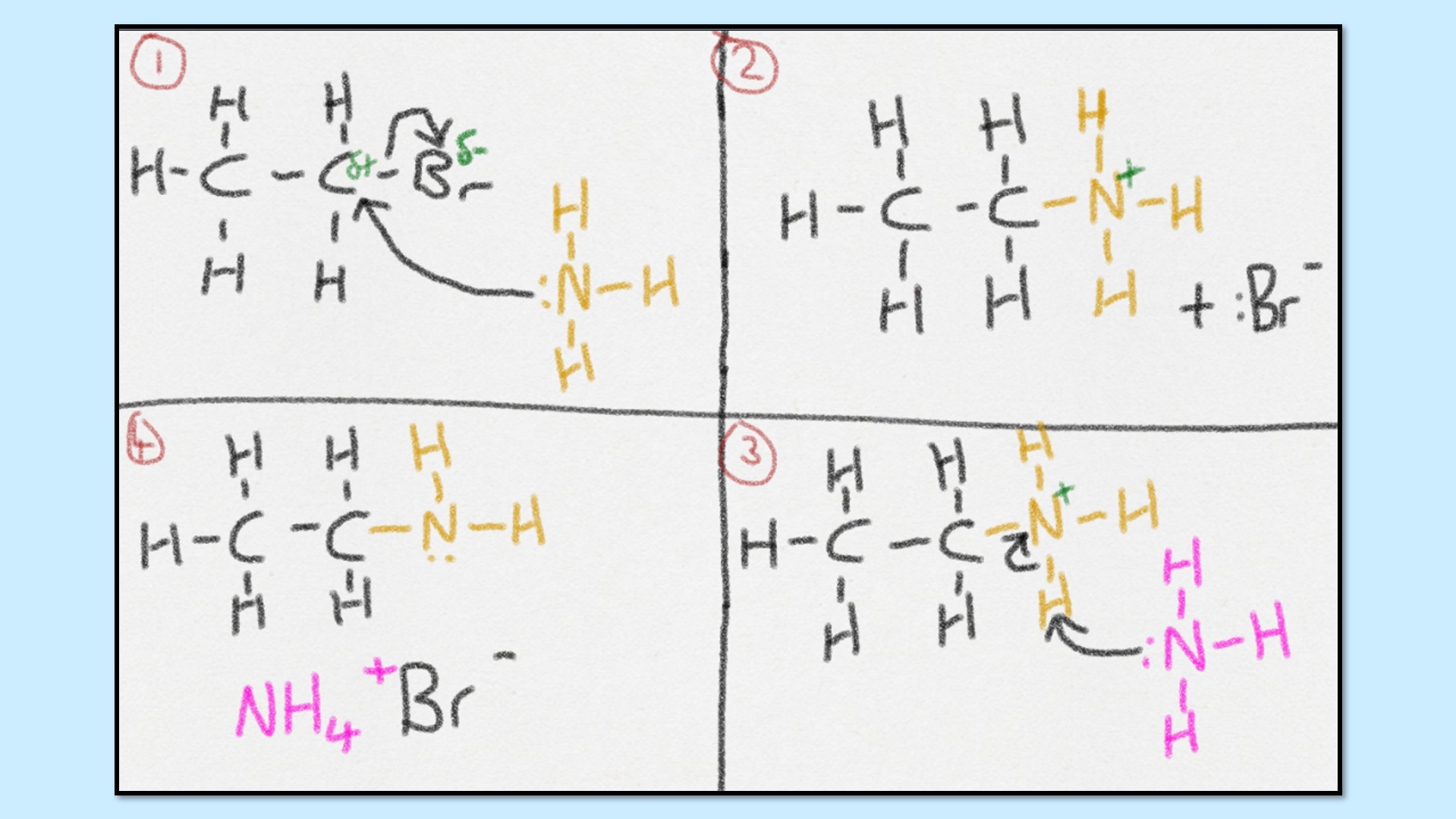


What is nucleophilic substitution? How do you write the mechanism for nucleophilic substitution of halogenoalkanes? What are the conditions for haloalkanes with alkali? All this and more covered in this comprehensive lesson with questions and answers! This is a Year 12 A level lesson for Edexcel International Unit 2 – WCH12, but it can also be used for all UK exam boards. All the slides in this lesson are fully animated and include answers to every mini plenary question and exam question. The breakdown of the slides (which are best opened on Microsoft PowerPoint) is as follows:
Slide 1 - Title and 5-minute starter. The starter is a grid of four questions entitled ‘last week, last lesson, today’s learning and future learning’. Use this generic slide for all of your lessons by simply changing the questions and the answers each time.
Slide 2 - Lesson objectives (see thumbnail image)
Slide 3 – A spider diagram showing all the reactions of halogenoalkanes with students need to know. Students should copy this spider diagram into their books and add to it as the lesson progresses.
Slide 4 - Hydrolysis of haloalkanes with water, including the conditions solvent and products. An example equation is given but no mechanism is drawn since students I’m not expected to know how to draw the mechanism for this reaction.
Slides 5 – 7: Hydrolysis of Haloalkanes with alkali dissolved in water. Conditions, mechanism and products all animates onto the screen as you click. Details of how to draw the mechanism, step by step, is also included
Slides 8 – 10: Elimination reaction of Haloalkanes with alkali dissolved in ethanol. Conditions, mechanism and products all animates onto the screen as you click. Details of how to draw the mechanism, step by step, is also included, along with the definition of elimination reactions. While students do not need to know this mechanism, we have found that it helps them no end if they know it.
Slides 11- 15: Nucleophilic substitution reaction of Haloalkane with cyanide, including the conditions mechanism solvents and products. Details are also given of the toxicity of potassium cyanide and this is contextualised for the students through imagery of the Jonestown massacre, in which cyanide was used as a poison to kill over 900 people. Show students the images at your discretion. Details of how to draw the mechanism, step by step, is also included. There is also a slide on the importance of this mechanism for organic synthesis.
Slides 16 – 21: Nucleophilic substitution reaction of Haloalkanes with ammonia, including the conditions, mechanism, solvent and products. Details of how to draw the mechanism, step by step, is also included!
Slides 22 – 28: Exam questions with mark scheme answers (included with the purchase of this resource)
If this resource supports your teaching, please consider leaving a positive review. It helps Lifeboat Teachers keep providing ready-to-use lessons for busy educators!
Something went wrong, please try again later.
This resource hasn't been reviewed yet
To ensure quality for our reviews, only customers who have purchased this resource can review it
to let us know if it violates our terms and conditions.
Our customer service team will review your report and will be in touch.